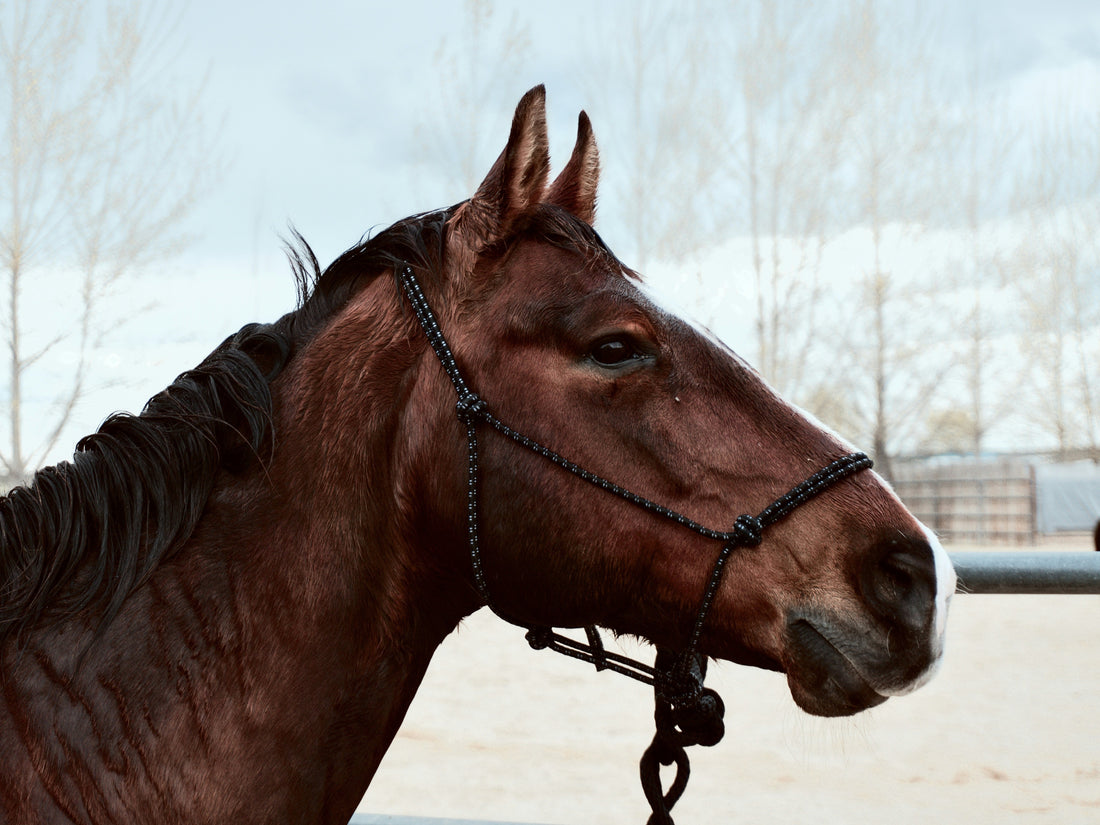
Different types of halters and their uses
Share
When it comes to horse care, one of the most essential pieces of equipment in your tack room is the halter. A halter is more than just a simple tool for leading and tying up your horse; it’s a critical piece of safety equipment and a way to communicate effectively with your equine companion. With various types of halters available, each designed for specific situations, it can be overwhelming to choose the right one. In this post, we'll break down the different types of halters and provide insights on when and where to use them.
Nylon Halters
Nylon halters are durable, affordable, and come in a wide variety of colors and designs. They are made from synthetic materials and often feature adjustable buckles for a custom fit.
Best Used For: Everyday use, such as grooming, leading, and tying up your horse. They are great for turnout as they are resistant to wear and tear from the elements.
Pros:
- Durable and long-lasting
- Easy to clean
- Available in many styles and colors
Cons:
- Can cause chafing or rub marks if not properly fitted
- Not ideal for horses that are difficult to handle, as they offer little control
Leather Halters
Leather halters are a classic choice, known for their strength and traditional look. They are often used in more formal settings and are preferred by many for their safety features, as leather will break under extreme pressure, reducing the risk of injury.
Best Used For: Showing, special events, and everyday use for well-behaved horses. They are also preferred for shipping due to their breakaway nature.
Pros:
- Elegant appearance
- Safe as they break under extreme pressure
- Can be custom-fitted and adjusted
Cons:
- More expensive than nylon halters
- Require regular cleaning and conditioning to maintain quality
Rope Halters
Rope halters are made from a single piece of rope, knotted to create pressure points. They are lightweight and lack metal parts, which can be beneficial for certain training situations.
Best Used For: Training and groundwork. They are excellent for horses that need more precise control or those that tend to pull, as the knots apply pressure to specific areas of the horse’s head.
Pros:
- Provides excellent control
- Lightweight and easy to carry
- Ideal for training purposes
Cons:
- Can be harsh if used improperly
- Not suitable for tying up a horse for long periods
Breakaway Halters
Breakaway halters are designed with a leather crown piece or a breakaway tab that will snap under pressure. This feature makes them a safer option for turnout and trailering.
Best Used For: Turnout and trailering. They provide peace of mind knowing that if your horse gets caught on something, the halter will break, reducing the risk of injury.
Pros:
- Safer for unsupervised turnout
- Reduces the risk of injury in case of entanglement
- Versatile for different situations
Cons:
- The breakaway feature means it will need replacing after it breaks
- Not as durable as non-breakaway options
Show Halters
Show halters are designed to enhance the appearance of the horse in competition settings. They are usually made from high-quality leather with detailed stitching and sometimes include decorative elements.
Best Used For: Showing and formal events. They help present your horse in the best light possible during competitions.
Pros:
- Attractive and designed to impress
- High-quality craftsmanship
- Enhances the horse's appearance in the ring
Cons:
- Expensive and not practical for everyday use
- Requires regular maintenance to keep looking its best
Choosing the Right Halter
When selecting a halter, consider the following factors:
- Purpose: What will you primarily use the halter for? Training, turnout, showing, or everyday use?
- Safety: Does the halter have breakaway features or pressure points that could cause harm if used improperly?
- Fit: Ensure the halter fits your horse correctly to avoid discomfort or injury.
- Durability: Consider the materials and construction, especially if you plan to use the halter frequently.
Understanding the different types of halters and their specific uses can help you make an informed decision and ensure the safety and comfort of your horse. Whether you're grooming, training, showing, or simply leading your horse, there's a halter designed to meet your needs. Invest in quality and ensure a proper fit, and you'll have a reliable tool for effective communication and control.